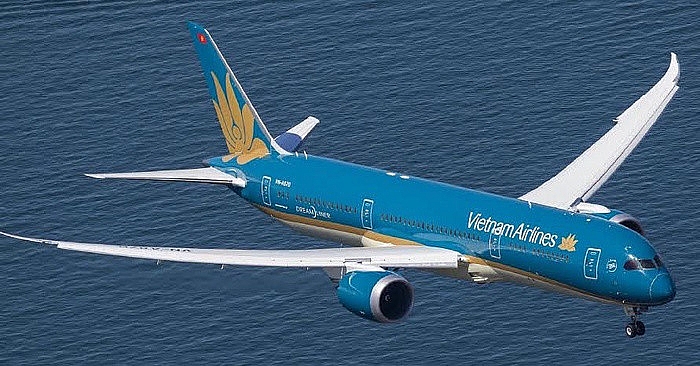Vietnam Airlines Group achieves $120 million profit in 2018
 |
| Vietnam Airlines is one of the region's leading airlines thanks to its modern fleet |
For the first time, Vietnam Airlines and its member airlines (including Jetstar Pacific and VASCO) have exceeded the VND100 trillion ($4.35 billion) mark in total consolidated revenue, generating approximately VND102 trillion ($4.43 billion).
Pre-tax profit reached VND2.8 trillion ($121.7 million), exceeding the planned figure by 15 per cent. Vietnam Airlines pocketed VND73.5 trillion ($3.2 billion) pre-tax revenue and more than VND2 trillion ($87 million) pre-tax profit. Its contribution to the state budget is roughly VND6.6 trillion ($287 million). The financial fortune is attributed to the operating profit margin of 4.38 per cent and debt to equity ratio below 3, lower than at the beginning of 2018.
In addition to the positive financial results, Vietnam Airlines has carried over 22 million passengers on 142,000 flights and 350,000 tonnes of cargo in 2018. Vietnam Airlines is among the world's leading airlines in on-time performance, scoring OTP at 90 per cent averagely.
The airline made significant progress in modernising its fleet and investing in technology with two wide-body Airbus A350 and three narrow-body A321Neo crafts. As a 4-star airline recognised by Skytrax for three consecutive years, Vietnam Airlines takes great pride in providing the best flying experience using one of the youngest and most modern fleets in the region.
Reflecting on the year, Duong Tri Thanh, president and CEO of Vietnam Airlines, said: “Vietnam Airlines’ strong earning performance capped another year of extraordinary achievement, including surpassing the VND2 trillion ($87 million) mark in profit. We made significant progress on several key initiatives in 2018, including improved human resources management as well as enhanced product portfolio and on-time-performance index. 2018’s success offers an unparalleled opportunity for Vietnam Airlines to unlock further growth and bolster service quality.”
In 2019, Vietnam Airlines will continue to complete the remaining procedures related to privatisation: increasing charter capital and transferring to the Ho Chi Minh Stock Exchange; completing its 2021-2025 fleet development plan with vision to 2030, incorporating new digital industrial technology known as Industry 4.0, and synchronising its IT system and leveraging digital business.
What the stars mean:
★ Poor ★ ★ Promising ★★★ Good ★★★★ Very good ★★★★★ Exceptional
Related Contents
Latest News
More News
- PM urges Ho Chi Minh City to innovate and remain Vietnam’s economic locomotive (November 26, 2025 | 15:29)
- Experts chart Vietnam's digital finance path: high hopes, high stakes (November 14, 2025 | 10:56)
- Vietnam’s seafood imports surge 30 per cent in first 10 months (November 10, 2025 | 19:35)
- Vietnam’s durian exports hit $1 billion milestone (October 30, 2025 | 17:41)
- Beyond borders: Sunhouse and new era of Vietnamese brands on Amazon (October 28, 2025 | 10:46)
- Record-breaking trade fair set to open in Hanoi (October 15, 2025 | 15:59)
- Timber sector seeks solutions to VAT refunds (October 14, 2025 | 18:58)
- Tether explores investment prospects in Vietnam’s digital asset sector (October 10, 2025 | 18:09)
- Vietnamese investors pour nearly $847 million into overseas markets in nine months (October 08, 2025 | 18:42)
- Vietnam amends Law on Civil Aviation to create drive airport investment (October 03, 2025 | 18:29)

 Tag:
Tag:


























 Mobile Version
Mobile Version